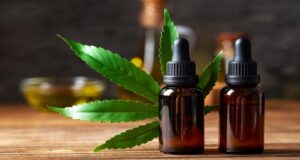Cannabidiol (CBD) is one of the popular active ingredients in the cannabis plant. It’s relative to tetrahydrocannabinol (THC)– which is what makes cannabis psychoactive. CBD and THC are both cannabinoids– natural compounds found along with over a hundred different other cannabinoids in the cannabis plant. Don’t worry, CBD is non-psychoactive– it will not make you high.
A lot of brands selling CBD will source it from a certain type of marijuana called hemp– which has the same spices as marijuana (Cannabis sativa) yet won’t produce more than trace amounts (> 0.3%) of the psychoactive active substance, THC.
CBD has lots of benefits, many of which have been supported by medical research. Supplements and pharmaceutical preparation works having CBD are being used by cancer patients to reduce the side-effects of radiation therapy (such as queasiness), by children with unusual types of epilepsy (such as Lennox-Gastaut and Dravet problem), and by many users worldwide for symptoms like anxiety, pain, inflammations, and sleeping troubles.
How Does CBD Work?
CBD does away with a subsystem in the body found in all creatures called the endocannabinoid system. The endocannabinoid system (ECS) involves a collection of special G-protein receptors (called endocannabinoid receptors), and hormones made to interact with these receptors. The ECS is used to help look after homeostasis throughout the body– which suggests interior equilibrium.
Homeostasis is the treatment of maintaining these metrics within the optimal ranges. CBD is a modulator of the endocannabinoid receptors. It affixes to them in distinct methods and changes their structure instead of allowing our naturally-produced endocannabinoids to bind to them better.
CBD doesn’t boost the endocannabinoid system straight; instead, it helps upregulate the system. On the other hand, the psychoactive cannabinoid, THC, triggers the endocannabinoid receptors directly. A few of the receptors THC turns on create a release of psychological serotonin– which develops the characteristic high from cannabis plants.
How Can CBD Help With Muscle Recovery After A Workout?
Alleviates Muscle Tension
Among the particular signs of DOMS is muscle stress. When it comes to injuries, the stress in the muscle tissue increasing the damaged area can make the discomfort a lot worse– which is why muscle depressants are so liked for eliminating discomfort throughout recuperation from workouts or injuries.
Lowers Muscle Pain
CBD is suggested to be a powerful pain-killer– as evidenced by both unscientific and professional research. This outcome may allow CBD to be used as a symptomatic help for muscle injuries or post-exercise healing. With a lot less pain, you’ll find it less complex to get back into task quicker and feel even more comfortable between exercises.
Reduce Inflammation
Possibly one of the most important tasks CBD plays in the process of muscular recovery is in decreasing inflammation. Among the most common strategies for decreasing inflammation after an injury or post-workout is to use ice in the place. The dispute focuses on what function inflammation plays throughout the recovery procedure.
Many thanks for reading this article. To learn more interesting facts about THC, read our THC Blog on our website – thc420hemp.com



